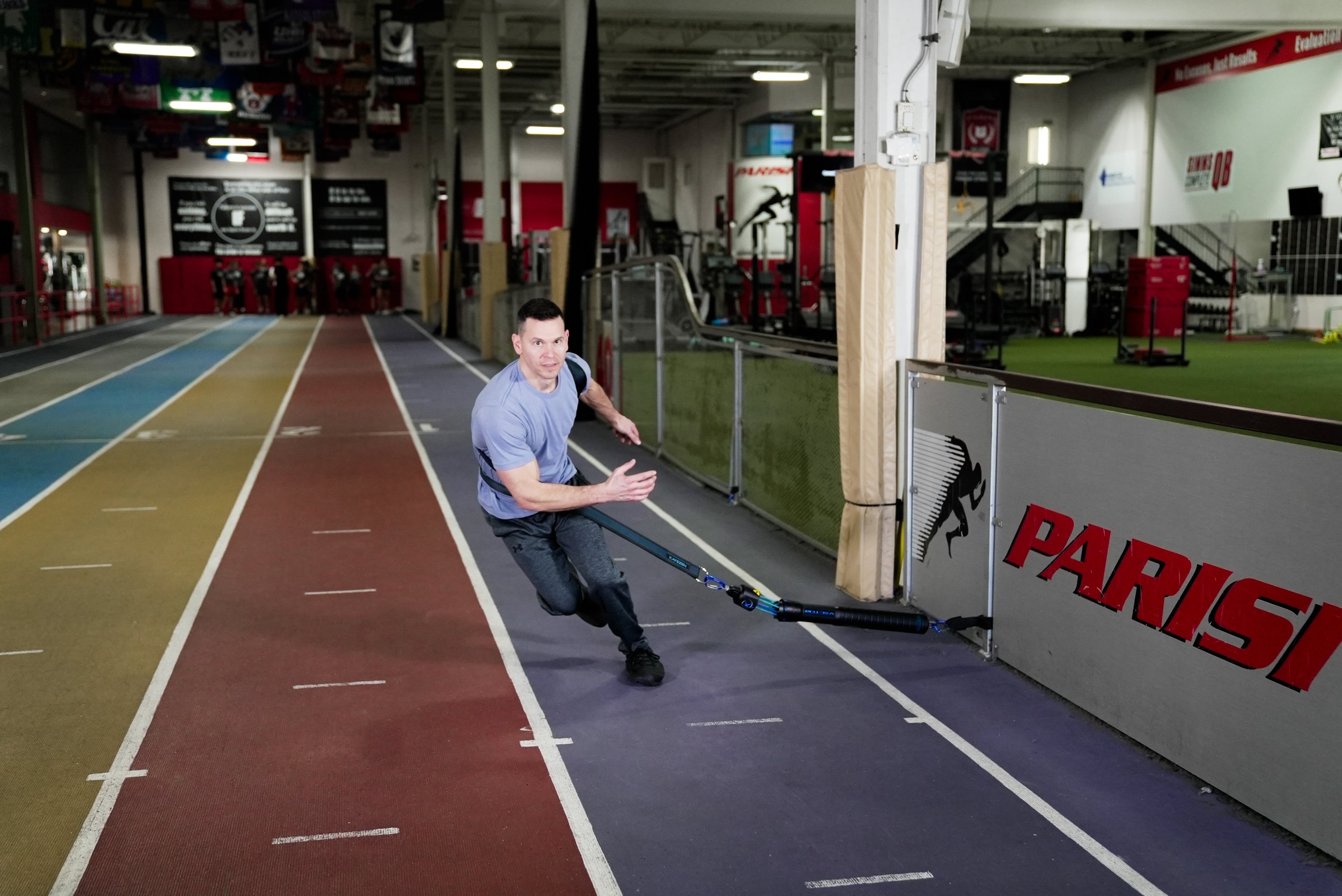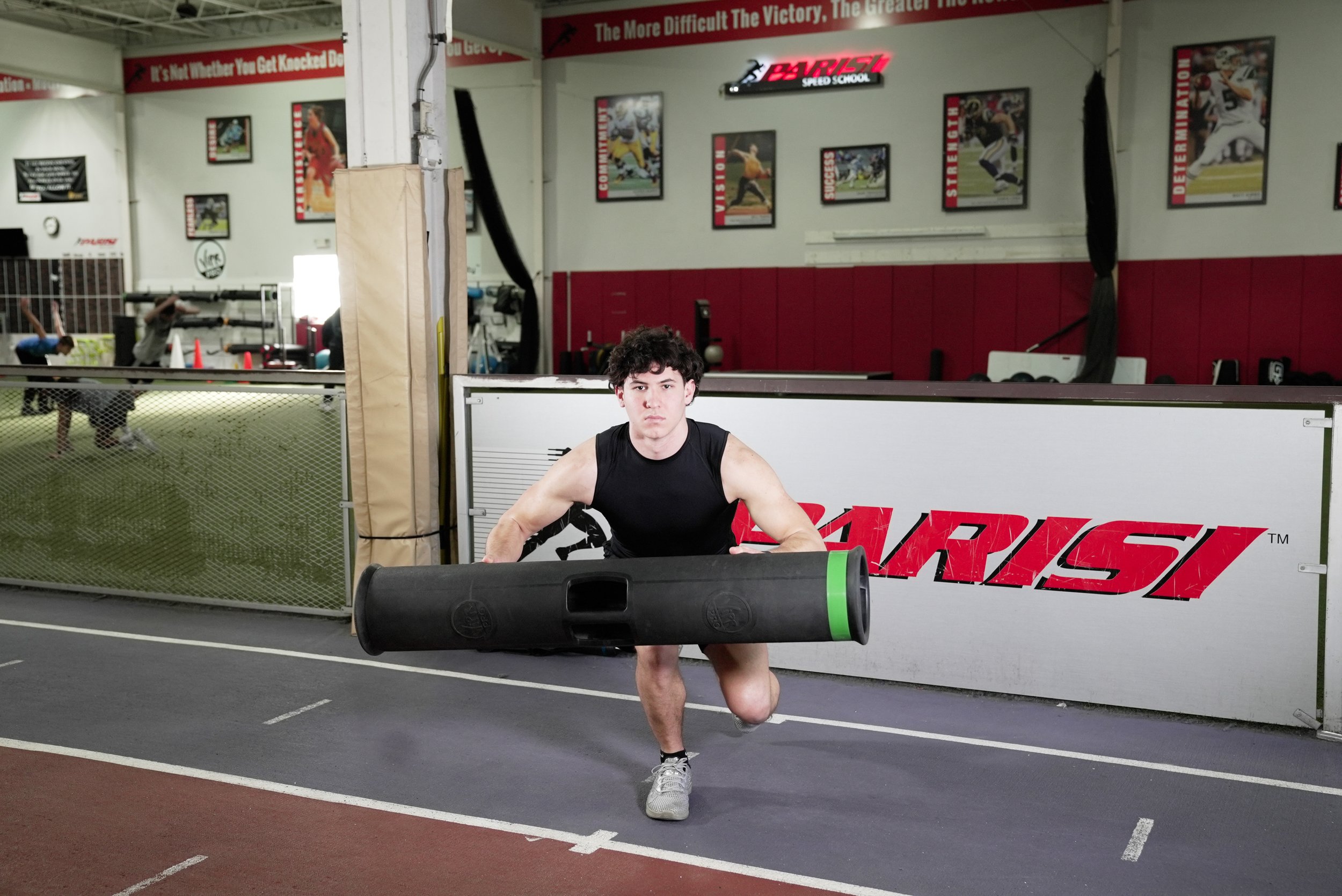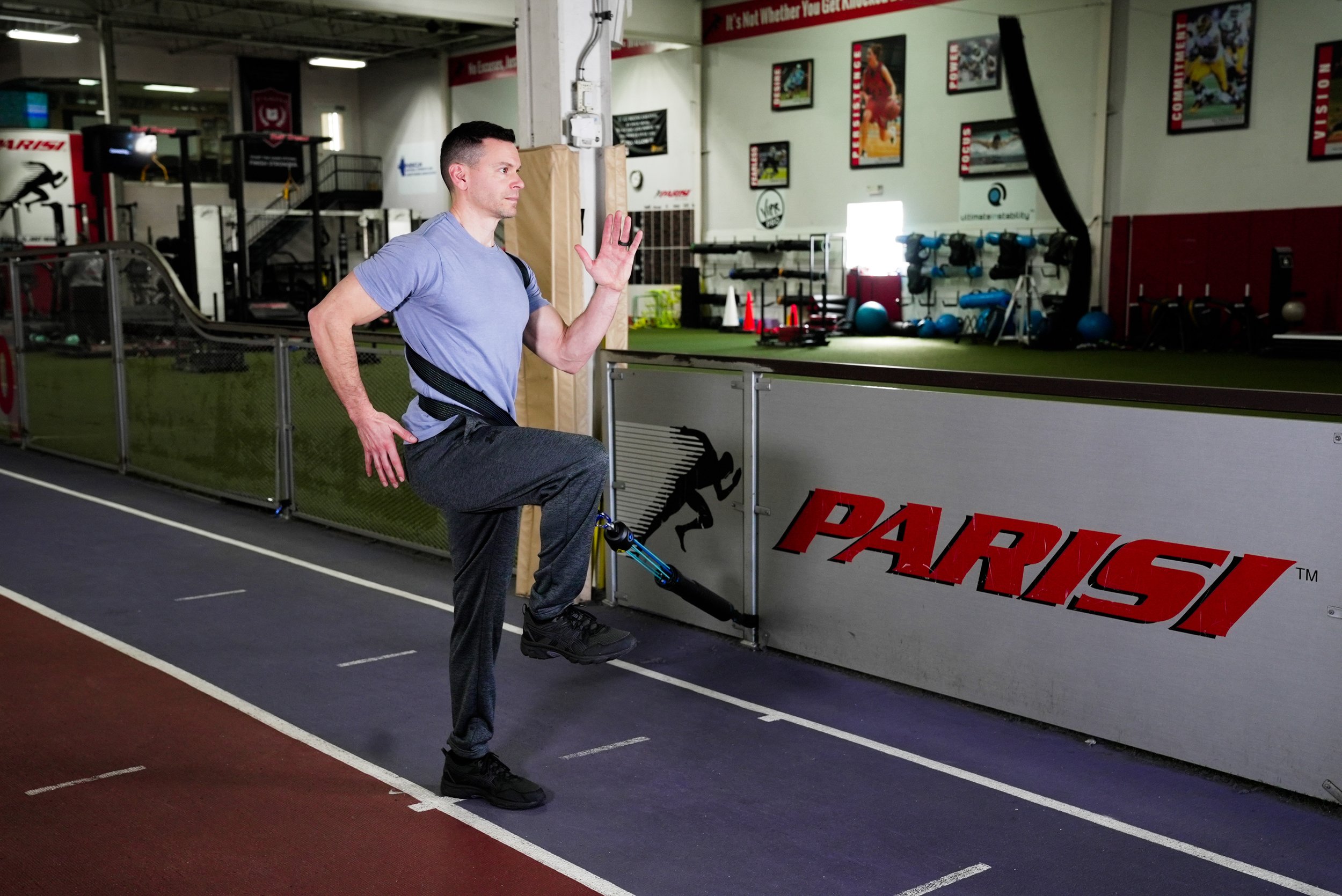DEPTH JUMPS
Depth jumps help develop power and maximal jump height by applying an overspeed/overload stimulus to tendons and myofascial tissues. They are intended to train the elastic/reactive qualities of the neuromuscular and fascia systems. Since depth jumps are a maximal effort exercise, they should be done using fewer reps and sets with ample rest between efforts to minimize fatigue. Additionally, box-height matters when it comes to achieving the optimal amount of overload for the desired adaptation in tendons and connective tissues. If the starting point is too low the elastic tissues will not be sufficiently challenged. If box-height is too high, the tissues will be over-overloaded, which will decrease rebound power.
Selecting the proper box-height for depth jumps is based can be done using the reactive strength index (RSI)—which is defined as jump height divided by ground contact time. An athlete should be able to achieve a high vertical jump with relatively short ground contact time).





